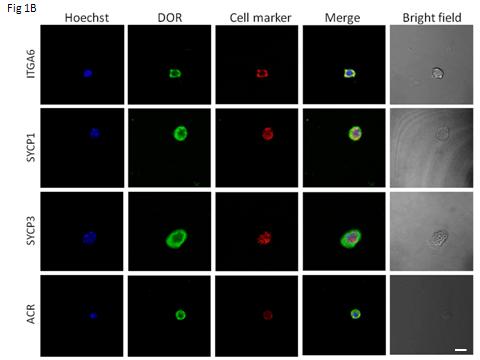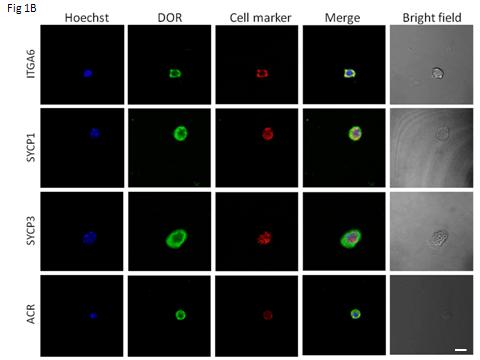
In recent years, over 3% of births per year in developed countries have corresponded to children conceived through assisted reproduction techniques, which poses a considerable economic burden apart from physical and psychological problems. According to the World Health Organisation, the cases of infertility have increased exponentially in developed countries during the last 10 years. Specifically, male infertility represents about half of the cases of infertility. Failures during the production of spermatozoa, in other words, during spermatogenesis, produce non-functional or low-quality spermatozoa and therefore infertility. Yet the molecular mechanisms involved in the regulation of this process remain unknown despite their importance in reproductive health.
This new piece of work published in Plos One and led by the UPV/EHU researcher Nerea Subirán describes for the first time the presence of opioid receptors in the cells involved in spermatozoon formation. Opioid receptors are part of the different systems of cell communication and are capable of regulating physiological processes that require a high degree of coordination and communication between the different cell and tissue types. The study describes how these receptors participate in the spermatozoa production process in mammals. Specifically, their activation regulates the formation of the machinery that undertakes to correctly segregate the genetic information during spermatogenesis.
"Although this is basic scientific research using animal models, these studies are shedding light on the molecular mechanisms that control male fertility, and are helping us to better understand the causes of many cases of infertility and enabling new horizons to be opened up in the development of therapeutic targets and strategies to combat it," explained Dr Subirán.
###
Nerea Subirán is a doctor in Physiology of the UPV/EHU, a lecturer in the UPV/EHU's Department of Physiology, and leads the Reproduction line within the Peptide Systems group led by Prof Jon Arazusta-Astiazarán. She has a broad international track record having completed her training in various research labs at high-prestige organisations, such as the Université Libre de Bruxelles (Belgium), the CSIC-University of Seville, the University of California, Irvine (USA) and the University of Birmingham (UK).
Bibliographical reference
Estomba H, Muñoa-Hoyos I, Gianzo M, Urizar-Arenaza I, Casis L, Irazusta J, Subirán N. Expression and Localization of Opioid Receptors in Male Germ Cells and the Implication for Mouse Spermatogenesis. PLoS One. 2016 Mar 31;11(3):e0152162.
Media Contact
Matxalen Sotillo
[email protected]
34-688-673-770
@upvehu
http://www.ehu.es





